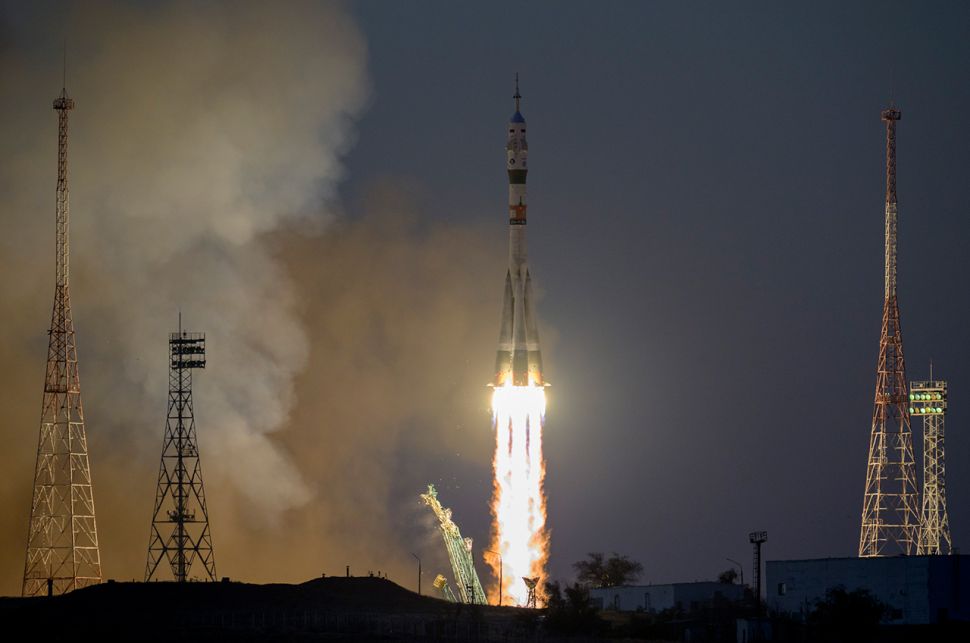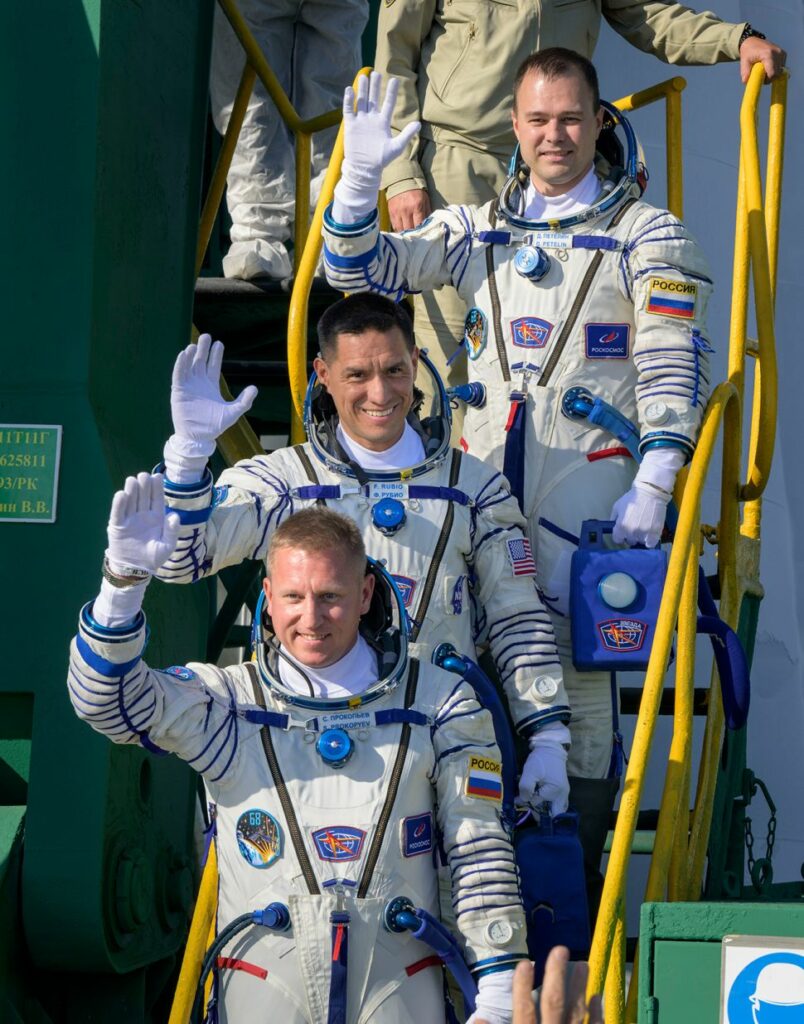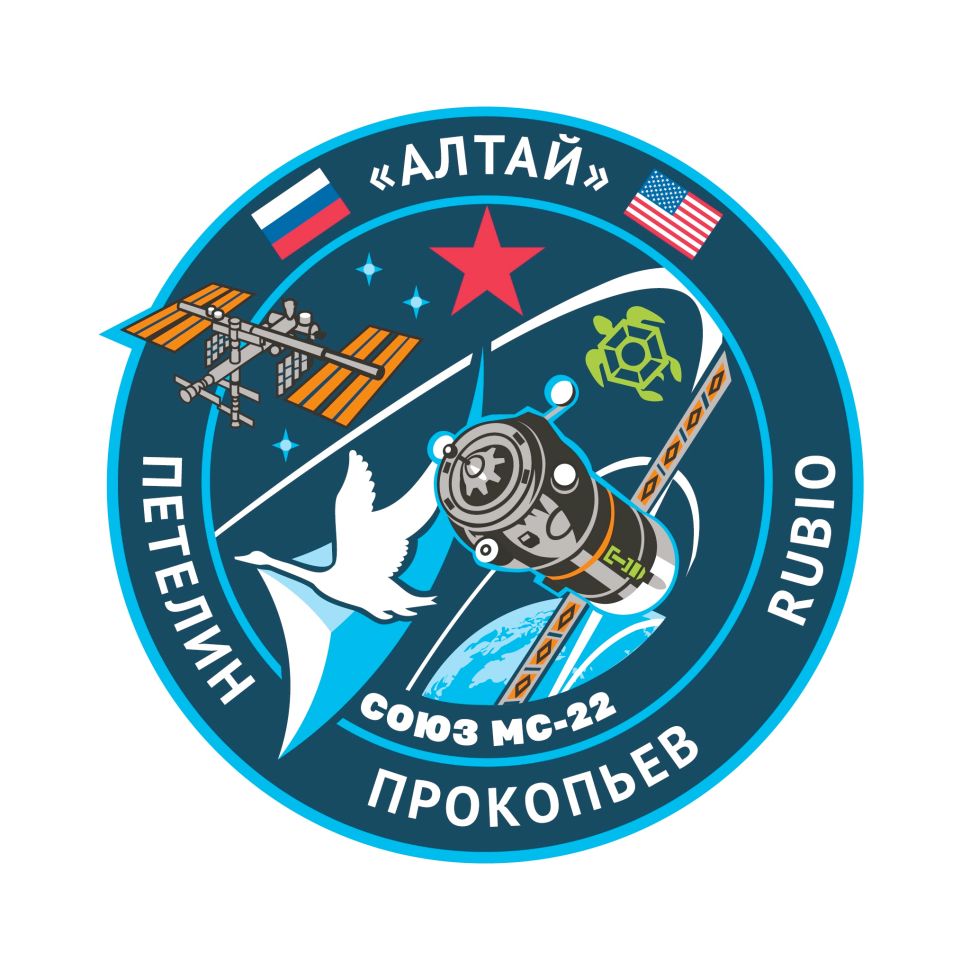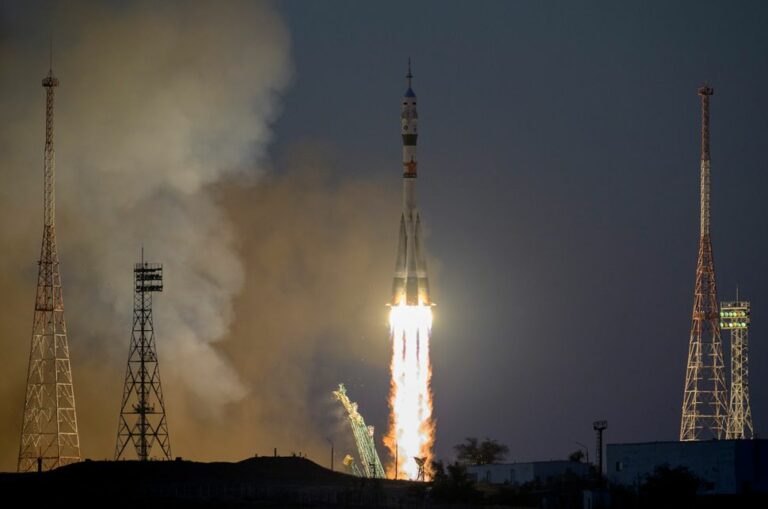Soyuz docks to space station with NASA astronaut and 2 cosmonauts aboard
NASA astronaut Frank Rubio and Roscosmos cosmonauts Sergey Prokopyev and Dmitri Petelin arrived at the International Space Station aboard a Russian Soyuz spacecraft on Sept. 21, 2022.
Frank Rubio joined cosmonauts Sergey Prokopyev and Dmitry Petelin for the launch on Soyuz MS-22.

The first “crew swap” deal since the termination of the space shuttle program more than 15 years ago has resulted in a U.S. astronaut taking off for the International Space Station in a seat on a Russian Soyuz spacecraft.
On Wednesday, Roscosmos, Russia’s state space agency, Sergey Prokopyev, and Francisco “Frank” Rubio of NASA launched together (Sept. 21). At 9:54 a.m. EDT, their Soyuz MS-22 spacecraft launched on a Soyuz-2.1a rocket from Site 31 at the Baikonur Cosmodrome in Kazakhstan (1354 GMT or 6:54 p.m. local time).
The Soyuz crew launched toward the International Space Station for their rendezvous after a nine-minute climb into orbit. In 1:06 p.m. EDT (1706 GMT), Prokopyev, Petelin, and Rubio docked their Soyuz to the Rassvet mini-research module and arrived at the orbiting laboratory. The hatch was opened and the crew entered the ISS at 3:35 PM EDT (1935 PM GMT).
Prokopyev, Petelin, and Rubio will join the Expedition 67 crew, which also includes commander Oleg Artemyev, cosmonauts Denis Matveev and Sergey Korsakov, NASA astronauts Bob Hines, Kjell Lindgren, and Jessica Watkins, and European Space Agency astronaut Samantha Cristoforetti, once the pressure has had time to equalize on both sides of the spacecraft’s hatches.
Rubio, Petelin, and Prokopyev are expected to remain in orbit for six months.
In an August NASA news conference, Rubio stated, “I believe we are all tremendously enthused about the overall endeavor.” “We all seem thrilled to possibly take part in the EVAs, or spacewalks, for which we spend a lot of time practicing. And there are some very interesting medical experiments that I’m looking forward to, like the biofabrication experiment, which holds up the possibility of being able to create human organs, which would be just wonderful in terms of our ability to treat human sickness here on Earth.”

“When you stop to think about it, those kinds of things are almost mind-blowing. And it’s really thrilling that we can contribute in a tiny but meaningful manner to making things a reality “added he.
After a ceremony on September 28 to transfer over command to Cristoforetti, who will become the first European woman to command a space station crew, Prokopyev, Petelin, and Rubio will transition to Expedition 68.

But Cristoforetti’s reign as commander won’t last long. On SpaceX’s Crew Dragon “Freedom,” she will travel to Earth in October alongside Hines, Lindgren, and Watkins. According to current plans, they will depart after the arrival of NASA astronauts Nicole Mann and Josh Cassada, JAXA astronaut Koichi Wakata, and Anna Kikina, the sole female cosmonaut for Roscosmos, on SpaceX’s Dragon “Endurance.”
Before she returns to Earth, Cristoforetti will give Prokopyev the reins of leadership.
Under the terms of a new crew exchange agreement between NASA and Roscosmos, Rubio and Kikina’s trips to space were organized. Assuring there is always at least one American astronaut and one Russian cosmonaut onboard the station—a requirement for maintaining the complex’s full operational capability—the two space agencies fly each other’s crew members.
According to Rubio, “I think this crew exchange truly shows the continued work of the fantastic teams on both sides and incredible people who made this possible.” “I believe it’s critical that human spaceflight and exploration—something that both agencies are extremely passionate about—remain a form of diplomacy and partnership where we can find common ground and keep achieving things together, especially when we’re at moments of potential attention elsewhere.”

Rubio’s flight on the Soyuz was exchanged for Kikina’s flight on the Dragon of SpaceX. The crew exchange substitutes the need for NASA to buy seats from Russia, which was last in use while NASA was still operating its winged space shuttles. NASA acquired 71 seats aboard Russian Soyuz spacecraft between 2006 and 2020 for an average price of $56.3 million per (or $3.9 billion overall).
Prokopyev, 47, is on his second space journey. He spent 197 days in space in 2018 as a flight engineer on the station’s 56th and 57th mission crews.
Rubio, 46, and Petelin, 39, are making their first trip into space. Five years before Rubio, a U.S. Army flight surgeon, started his training to become a NASA astronaut, Petelin was chosen as a cosmonaut in 2012.
The Soyuz MS-22 is Russia’s 68th and 151st Soyuz launches towards the International Space Station since 2000.
This article is republished from collectSPACE.com . Read the original article.
Source:SpaceCom
Do not forget to share your opinion with us to provide you with the best posts !




0 Comments